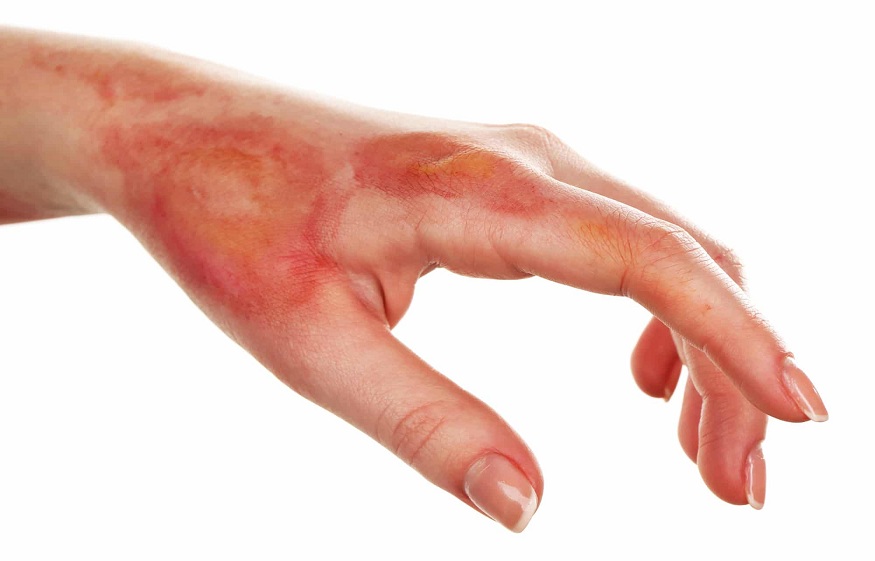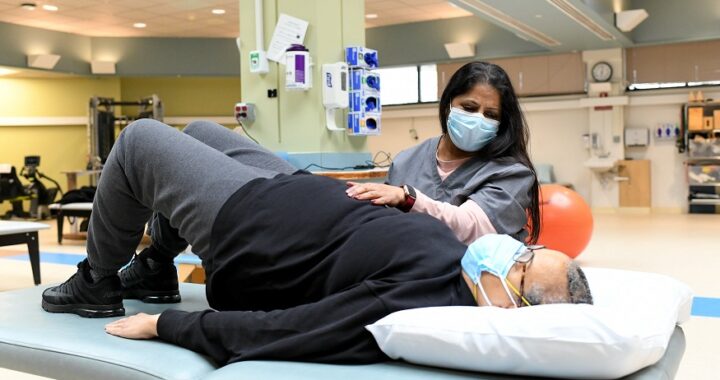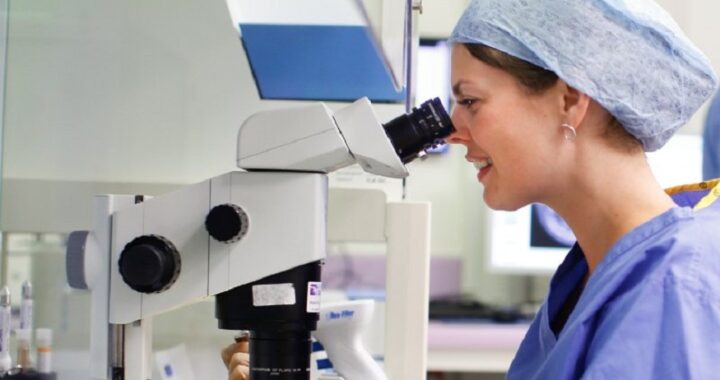Treating Severe Burn Wounds with New Methods

Severe burns are among the most traumatic and complex injuries a person can endure. Whether caused by fire, hot liquids, chemicals, electricity, or radiation, these injuries can result in deep tissue destruction, fluid loss, and life-threatening complications. As medicine advances, so do the treatment approaches available for managing burn wounds. Modern therapies now go far beyond traditional ointments and dressings, offering faster healing, reduced scarring, and improved survival rates.
In this blog, we’ll explore the latest breakthroughs in burn wound care, from bioengineered skin and stem cell therapies to regenerative techniques and advanced dressings. These emerging methods are transforming patient outcomes and redefining what’s possible in recovery.
Understanding the Nature of Severe Burn Wounds
Burn injuries are classified by depth and severity:
First-degree burns affect only the outer layer of skin (epidermis), causing redness and minor pain.
Second-degree burns extend into the dermis and may cause blistering, swelling, and severe pain.
Third-degree burns destroy both the epidermis and dermis, often reaching the fat layer beneath and leading to a charred or white appearance.
Fourth-degree burns go even deeper, damaging muscle, tendons, or bone.
Severe burn wounds, typically third or fourth-degree, require intensive and often long-term care. They pose risks such as:
- Fluid imbalance and shock
- Infection
- Hypothermia
- Loss of function in affected areas
- Long-term scarring and disfigurement
Traditional treatments include wound cleaning, topical antibiotics, debridement, skin grafting, and physical therapy. While effective, these approaches often involve long hospital stays and significant pain. Today, newer, more sophisticated methods offer a better path forward.
Advancements in Burn Wound Treatment
1. Bioengineered Skin Substitutes
For patients with extensive burns, donor skin for grafting may be unavailable or insufficient. This is where bioengineered skin substitutes offer a groundbreaking solution.
Cultured epithelial autografts (CEA) involve growing the patient’s skin cells in a lab to create sheets for grafting. Though delicate, CEAs are life-saving when donor sites are scarce.
Allogeneic skin substitutes, made from donated human skin, are processed to remove immune cells while preserving the structure. They temporarily cover wounds, reduce infection, and prepare the wound bed for permanent closure.
Synthetic skin substitutes combine collagen, silicone, and other materials to mimic the natural dermis and epidermis. Brands like Integra® and Biobrane® offer scaffolds that encourage the patient’s cells to grow into the material and regenerate natural skin.
These innovations not only improve survival in large burns but also reduce the need for painful multiple surgeries.
2. Spray-On Skin Technology
Once considered futuristic, spray-on skin is now a real option in burn centers around the world. The procedure involves:
- Taking a small sample of the patient’s healthy skin
- Processing it to isolate regenerative skin cells
- Spraying the cell suspension directly onto the burn wound
The technology enables the treatment of larger areas using minimal donor skin, promotes rapid healing, and improves cosmetic outcomes. One of the most notable systems, ReCell®, has shown promising results in clinical trials and is FDA-approved for use in the U.S.
3. Stem Cell Therapy
Stem cells are revolutionizing medicine, and burn care is no exception. These unspecialized cells can transform into various tissue types and release growth factors that accelerate healing.
Mesenchymal stem cells (MSCs), often harvested from bone marrow or fat tissue, have shown excellent results in reducing inflammation, promoting skin regeneration, and minimizing scar tissue.
Topical application or injection of stem cells into the wound area stimulates new blood vessel formation (angiogenesis), re-epithelialization, and faster wound closure.
Although still under research in many areas, early trials and case studies point to stem cell therapy becoming a future standard in treating severe burns.
4. Negative Pressure Wound Therapy (NPWT)
Also known as wound VAC therapy, NPWT involves placing a sealed dressing over the burn and connecting it to a vacuum pump. This gentle suction:
- Removes excess fluid and infectious material
- Increases blood flow
- Promotes the growth of granulation tissue
- Prepares the wound for grafting or closure
NPWT has been a game-changer for managing burns that are infected, difficult to close, or resistant to standard care. It is particularly useful for patients with comorbidities like diabetes or poor circulation.
5. Hydrogel and Advanced Moist Dressings
Keeping a burn wound moist, not dry, is critical for healing. Modern dressings are designed to:
- Retain moisture and create an optimal environment for regeneration
- Absorb excess exudate to prevent maceration
- Deliver antimicrobial agents directly to the wound
Hydrogels, for example, soothe pain and protect nerve endings while hydrating dry wounds. Other innovations include:
- Silver-impregnated dressings (antibacterial)
- Honey-based dressings (natural healing support)
- Foam and alginate dressings for high-drainage burns
These dressings often require fewer changes, reducing discomfort and the risk of infection.
6. Hyperbaric Oxygen Therapy (HBOT)
HBOT exposes patients to 100% oxygen at increased atmospheric pressure inside a specialized chamber. For burn victims, this has several key benefits:
- Enhances oxygen delivery to damaged tissues
- Reduces swelling and inflammation
- Stimulates blood vessel growth and collagen production
- Strengthens the immune response
Although not standard for all burns, HBOT is particularly helpful in deep burns, smoke inhalation injuries, and wounds with compromised circulation.
7. Laser Therapy and Scar Reduction Techniques
Once the wound is closed, the battle isn’t over. Severe burns often leave thick, inflexible scars that affect movement and appearance. Advanced laser treatments can:
- Remodel collagen to soften scars
- Improve pigmentation
- Restore skin texture and flexibility
Fractional CO2 lasers and pulsed dye lasers are commonly used in post-burn scar management and have been shown to reduce pain, itching, and contractures.
Holistic and Multidisciplinary Care
While technology is transforming how we treat burns, comprehensive healing still requires a team approach. Optimal care includes:
- Pain management
- Nutritional support to aid tissue repair
- Physical and occupational therapy to maintain mobility and function
- Psychological counseling to address trauma and body image concerns
- Reconstructive surgery when needed for function or aesthetics
Burn survivors often undergo years of follow-up care. Integrating new technologies into this long-term plan ensures the best possible outcomes.
The Future of Burn Wound Care
As researchers continue to uncover the complexities of skin regeneration, we’re moving toward even more personalized and effective treatments. Some exciting directions include:
- 3D bioprinting of skin using the patient’s own cells
- Smart dressings that release medication in response to infection
- Gene therapy to correct wound-healing deficiencies
- AI-driven wound monitoring using imaging and predictive analytics
These cutting-edge innovations may one day make prolonged suffering from burn wounds a thing of the past.
Conclusion
Treating severe burn injuries has come a long way from the days of simple bandages and guesswork. Today, clinicians can leverage a range of new methods, from bioengineered skin to regenerative medicine, to save lives, preserve function, and restore appearance. As we continue to innovate, hope rises for burn survivors around the world.
For anyone facing the long and painful journey of recovery, these advancements offer a message that’s both powerful and compassionate: better outcomes are not only possible, they are increasingly within reach.
If you or someone you love is recovering from a burn injury, speak to a specialist about integrating these new treatments into your care plan. Early access to advanced therapies can significantly improve the path to healing.

 How to Choose the Best Intensive Outpatient Program
How to Choose the Best Intensive Outpatient Program  Important Things to Learn About Neurological Physiotherapy Treatment
Important Things to Learn About Neurological Physiotherapy Treatment  Factors to Consider Before Getting a Pelvic Floor Treatment
Factors to Consider Before Getting a Pelvic Floor Treatment  Sober Living Homes Helps To Lead A Truly Sober Life After Rehab Treatment
Sober Living Homes Helps To Lead A Truly Sober Life After Rehab Treatment  The Cost of Fertility Treatment: Is It Worth It?
The Cost of Fertility Treatment: Is It Worth It?  Types of Plastic Surgery
Types of Plastic Surgery  NATURAL AND MINDFUL WAYS TO MANAGE NICOTINE CRAVINGS
NATURAL AND MINDFUL WAYS TO MANAGE NICOTINE CRAVINGS  How to Choose the Best Products for Hyperpigmentation Based on Your Skin Type
How to Choose the Best Products for Hyperpigmentation Based on Your Skin Type  How Mind-Body Health Fits into Chronic Care
How Mind-Body Health Fits into Chronic Care  What Is Rapid Transformational Therapy (RTT) and How It Differs from Traditional Hypnotherapy
What Is Rapid Transformational Therapy (RTT) and How It Differs from Traditional Hypnotherapy